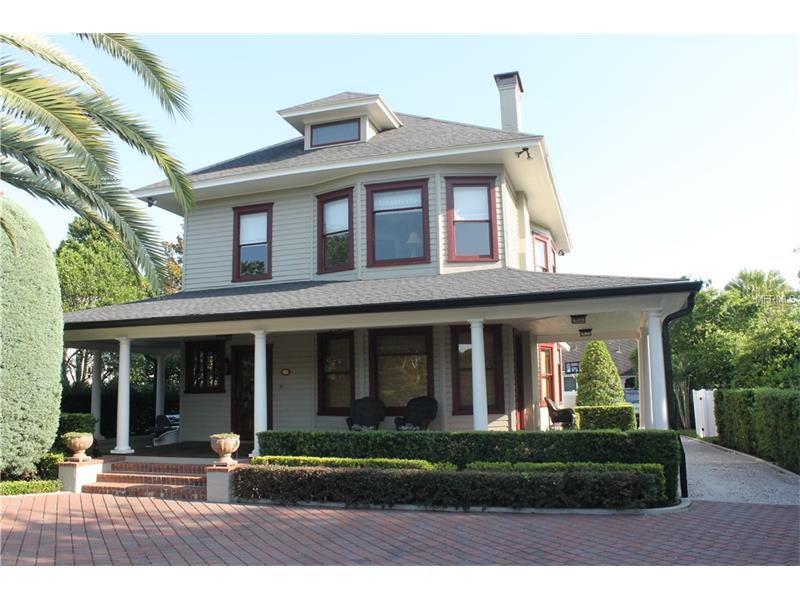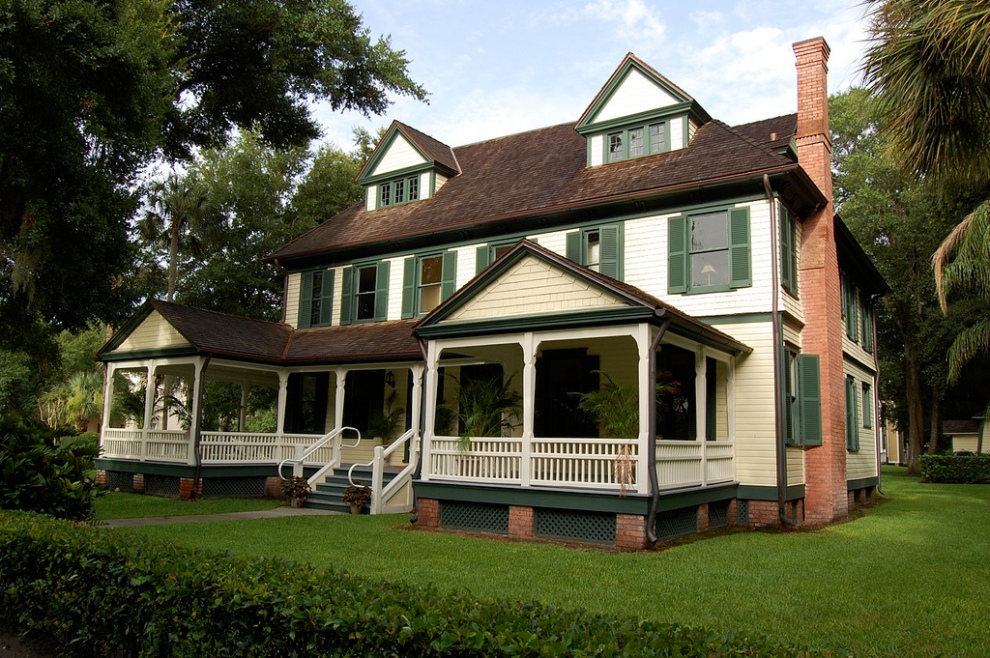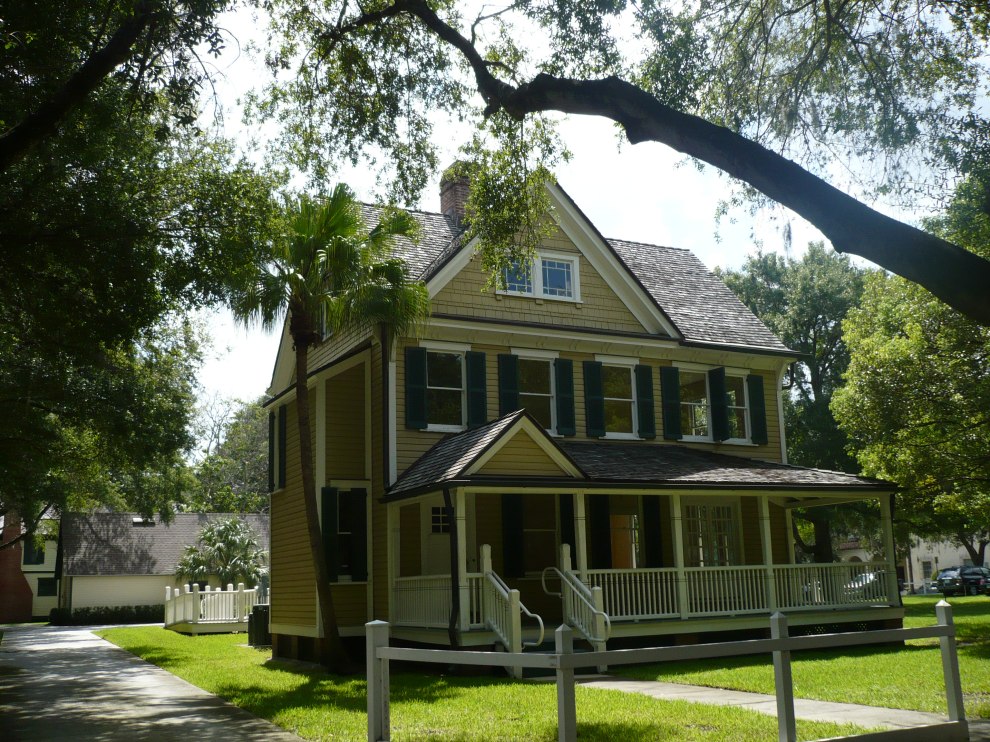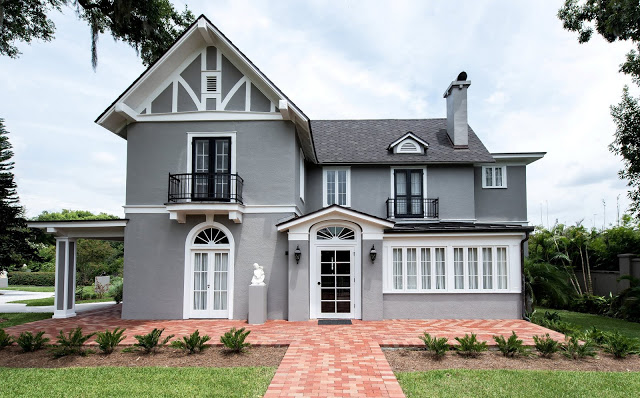An ironic turn of events took place in Winter Park late last month.
On Saturday, May 21, renowned economist Donovan Rypkema spoke to an audience of more than 200 at Rollins College, keynoting the 10th Annual James Gamble Rogers Colloquium on Historic Preservation. Rypkema put forth with sound logic and indisputable data the case for historic districts. He highlighted numerous academic studies from cities around the country that prove historic districts bring about increased property values, reduced foreclosures, higher tax revenues, more heritage tourism, and positive demographic shifts toward the “creative class” that cities want to attract.
Two days later, a quarter mile away at City Hall, the majority of Winter Park’s City Commission voted to overturn a key provision of the city’s historic preservation ordinance, making it harder to form a historic district in Winter Park than in any other city in Florida, and greatly reducing the likelihood that any additional districts might be formed in the city.
Regrettably, none of the city commissioners who voted to turn back the clock on districts were able to attend Mr. Rypkema’s presentation. We’re certain they would have been troubled to hear the leading expert on the economics of historic preservation warn “I don’t know of another city in the United States the size of Winter Park that has the high quality of architectural and urban character, balanced with as little protection of that character for the future. That I do know.”
The highly informative and entertaining speech can be viewed in its entirety here:
Yet there are reasons to remain optimistic. Looking ahead, there are ways to protect our “high quality architectural and urban character” without the formation of local historic districts, and we hope the city will set its sights on these:
- Individual homeowners may choose to designate their homes. We are hopeful that the Historic Preservation Board and Winter Park’s City Commission, in the coming months, will offer benefits to homeowners who make this lasting gift to the community.
- While National Register Districts lack the statutory protection and proven economic benefits of local districts, they still bring increased appreciation for a region’s history, and should be encouraged.
- Celebrating exemplary preservation efforts—as is the goal of the Winter Park Historic Preservation Board Awards that were given at the May Colloquium (see sidebar)—also increase the likelihood that people will choose to preserve rather than demolish.
The Historic Preservation Board, under the leadership of Chairman Bill Segal, is increasing its profile in the community and studying ways to reward preservation, and deserves our support. Under Segal’s leadership the board is functioning methodically and professionally, and for the first time in years, several board members attended the Colloquium. We are grateful for their cooperation and leadership.
Individually, all five commissioners have publicly voiced their commitment to celebrating and protecting the historic resources that grace our city. We trust that while the majority finds historic districts unpalatable, all five commissioners will work together to explore and adopt other innovative approaches to preserve Winter Park’s historic assets for future generations.
ANNOUNCING THE 2016 WINNERS OF THE CITY OF WINTER PARK HISTORIC PRESERVATION AWARDS
Excellence in Residential Renovation – The Grover House, 567 Osceola Avenue
Recipients: Owners William and Joanne Stange
 567 Osceola Avenue is significant as an example of the Free Classic type of Queen Anne style house and for its association with the early period of development in Winter Park. Built around 1912 by L. W. Spangler, it was sold to F. L. Hall in 1925 who subdivided the surrounding property and also was the developer of nearby Osceola Court in the late 1920s. At different times, the house became the home of Dr. and Mrs. Edwin Grover and his sisters Eulalie and Anne, and the retirement home of Sidney and Louise Homer. Dr. Grover was the Professor of Books at Rollins College beginning in 1926. In his early career, he was an editor and publisher. He also wrote several books and mentored many students who were published. Dr. Grover was among the active group of residents who helped create Mead Garden. Eulalie Grover wrote the Sunbonnet Babies series of children’s’ book. Sidney Homer was a noted composer and Louise Homer was a classically trained opera singer. Listed on the Winter Park Register of Historic Places in 2005, The Grover House at 567 Osceola Avenue had been a student rental for many years and while little altered, it was also not in good condition. Richard Booth of Boowell Properties purchased the house and set about rehabilitating it and preparing it for modern living. The original windows, wood siding and porch columns were painstakingly restored. The tangle of electrical and plumbing lines replaced with code compliant systems and plan approved for a rear addition to permit an updated kitchen and bathrooms. Owners William and Joanne Stange completed the beautiful rehabilitation of the house. The accurate restoration makes the Grover House an elegant nod to Winter Park’s early days.
567 Osceola Avenue is significant as an example of the Free Classic type of Queen Anne style house and for its association with the early period of development in Winter Park. Built around 1912 by L. W. Spangler, it was sold to F. L. Hall in 1925 who subdivided the surrounding property and also was the developer of nearby Osceola Court in the late 1920s. At different times, the house became the home of Dr. and Mrs. Edwin Grover and his sisters Eulalie and Anne, and the retirement home of Sidney and Louise Homer. Dr. Grover was the Professor of Books at Rollins College beginning in 1926. In his early career, he was an editor and publisher. He also wrote several books and mentored many students who were published. Dr. Grover was among the active group of residents who helped create Mead Garden. Eulalie Grover wrote the Sunbonnet Babies series of children’s’ book. Sidney Homer was a noted composer and Louise Homer was a classically trained opera singer. Listed on the Winter Park Register of Historic Places in 2005, The Grover House at 567 Osceola Avenue had been a student rental for many years and while little altered, it was also not in good condition. Richard Booth of Boowell Properties purchased the house and set about rehabilitating it and preparing it for modern living. The original windows, wood siding and porch columns were painstakingly restored. The tangle of electrical and plumbing lines replaced with code compliant systems and plan approved for a rear addition to permit an updated kitchen and bathrooms. Owners William and Joanne Stange completed the beautiful rehabilitation of the house. The accurate restoration makes the Grover House an elegant nod to Winter Park’s early days.
Excellence in Adaptive Reuse– Osceola Lodge and Knowles Cottage
Recipient: Facilities Manager Bob Jones on behalf of the Charles Hosmer Morse Foundation

Osceola Lodge is home of the Winter Park Institute and the Bach Festival Society of Winter Park

Knowles Cottage is home to the Winter Park History Museum offices
Osceola Lodge, named after the Seminole Indian chief, was built on speculation in 1886 by Winter Park pioneer Francis B. Knowles who also built the “winter cottage” at 232 North Knowles Avenue. Charles Hosmer Morse (1833-1921) bought Osceola Lodge and the Knowles Cottage in 1904 and he expanded and remodeled it in the Arts and Crafts style. Granddaughter Jeannette Genius moved into the house in 1937, and she and her husband Hugh McKean lived in the house for a few years beginning in 1947. A private residence for most of its life, Osceola Lodge is now home to the Rollins College Winter Park Institute; a visiting scholars program launched in 2008. Supervised by John Parks of the preservation firm Renker Eich Parks Architects of St. Petersburg, the Morse Foundation completed roof to foundation rehabilitations of Osceola Lodge and the adjacent Knowles Cottage. Historical photographs and Jeannette Genius McKean’s records provided the basis for an accurate restoration. The original pale yellow exterior color was restored and the asbestos roof shingle replaced with cedar of the type used in the early 19th century. Osceola Lodge and Knowles Cottage stand as representatives of Charles Hosmer Morse’s legacy and as excellent examples of Winter Park’s early history.
Excellence in Commercial Renovation –The Capen-Showalter House
Recipient: Executive Director Debbie Komanski on behalf of The Albin Polasek Foundation
 The Capen-Showalter House is associated with the pioneer development of Winter Park and families significant in city history. It was built in 1885 for James S. Capen, one of the City’s early settlers. The house was originally a Folk Victorian style wood frame building located at 520 North Interlachen on Lake Osceola. It was remodeled in 1923 in the Tudor Revival style fashionable during the Florida Land Boom period. It is significant for its association with James Capen and early development of Winter Park, and its altered original architecture has achieved its own significance over time due to its association with the Showalter family. The Albin Polasek Museum & Sculpture Gardens, Winter Park History Museum, the Friends of Casa Feliz and hundreds of community supporters rescued the home by raising funds to relocate the 200-ton building across Lake Osceola to a new lakefront site on the Polasek Museum grounds. Split into two halves nicknamed Fred and Ginger for the move, the house was floated across the lake in an event that attracted national media attention. The Capen-Showalter House is now beautifully restored and tailored for its new life as museum offices, history and art exhibits, and gracious space for workshops, meetings and special events.
The Capen-Showalter House is associated with the pioneer development of Winter Park and families significant in city history. It was built in 1885 for James S. Capen, one of the City’s early settlers. The house was originally a Folk Victorian style wood frame building located at 520 North Interlachen on Lake Osceola. It was remodeled in 1923 in the Tudor Revival style fashionable during the Florida Land Boom period. It is significant for its association with James Capen and early development of Winter Park, and its altered original architecture has achieved its own significance over time due to its association with the Showalter family. The Albin Polasek Museum & Sculpture Gardens, Winter Park History Museum, the Friends of Casa Feliz and hundreds of community supporters rescued the home by raising funds to relocate the 200-ton building across Lake Osceola to a new lakefront site on the Polasek Museum grounds. Split into two halves nicknamed Fred and Ginger for the move, the house was floated across the lake in an event that attracted national media attention. The Capen-Showalter House is now beautifully restored and tailored for its new life as museum offices, history and art exhibits, and gracious space for workshops, meetings and special events.

Appears the link to view the presentation may have been omitted
Jack Miles Winter Park, FL 32789-2408 LinkedIn: http://www.linkedin.com/in/jackmiles iMac
>
You need to press the ‘play’ button in the lower left hand corner. Let me know if that doesn’t show up for you. Thanks–